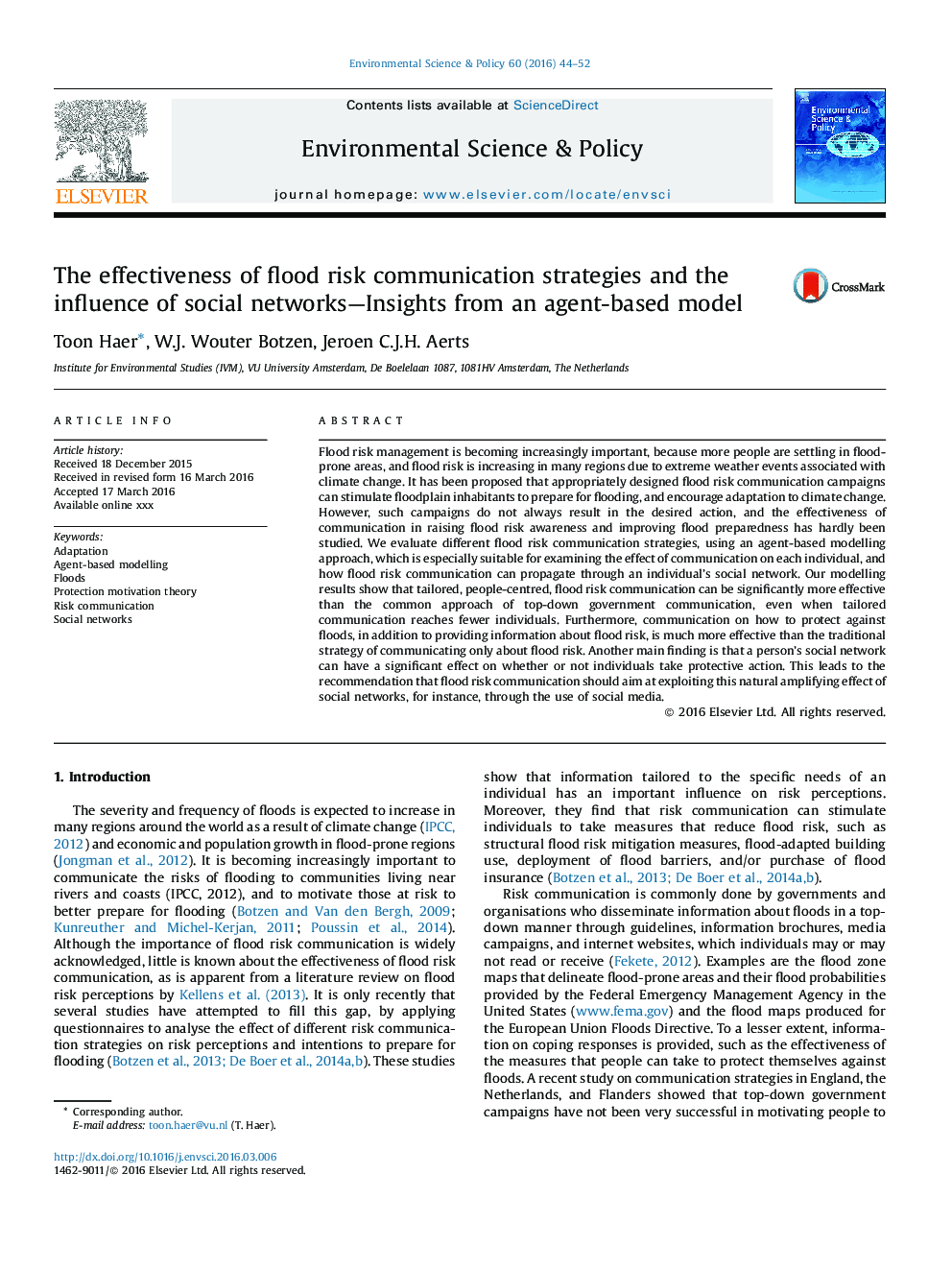| Article ID | Journal | Published Year | Pages | File Type |
|---|---|---|---|---|
| 7466901 | Environmental Science & Policy | 2016 | 9 Pages |
Abstract
Flood risk management is becoming increasingly important, because more people are settling in flood-prone areas, and flood risk is increasing in many regions due to extreme weather events associated with climate change. It has been proposed that appropriately designed flood risk communication campaigns can stimulate floodplain inhabitants to prepare for flooding, and encourage adaptation to climate change. However, such campaigns do not always result in the desired action, and the effectiveness of communication in raising flood risk awareness and improving flood preparedness has hardly been studied. We evaluate different flood risk communication strategies, using an agent-based modelling approach, which is especially suitable for examining the effect of communication on each individual, and how flood risk communication can propagate through an individual's social network. Our modelling results show that tailored, people-centred, flood risk communication can be significantly more effective than the common approach of top-down government communication, even when tailored communication reaches fewer individuals. Furthermore, communication on how to protect against floods, in addition to providing information about flood risk, is much more effective than the traditional strategy of communicating only about flood risk. Another main finding is that a person's social network can have a significant effect on whether or not individuals take protective action. This leads to the recommendation that flood risk communication should aim at exploiting this natural amplifying effect of social networks, for instance, through the use of social media.
Keywords
Related Topics
Physical Sciences and Engineering
Energy
Renewable Energy, Sustainability and the Environment
Authors
Toon Haer, W.J. Wouter Botzen, Jeroen C.J.H. Aerts,
